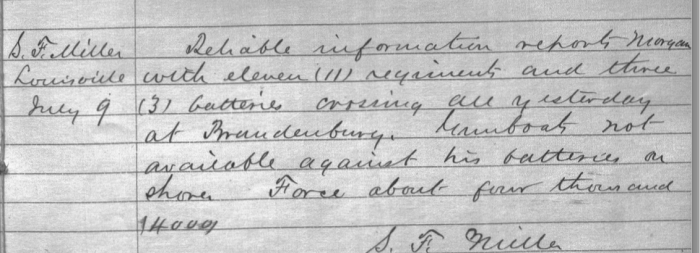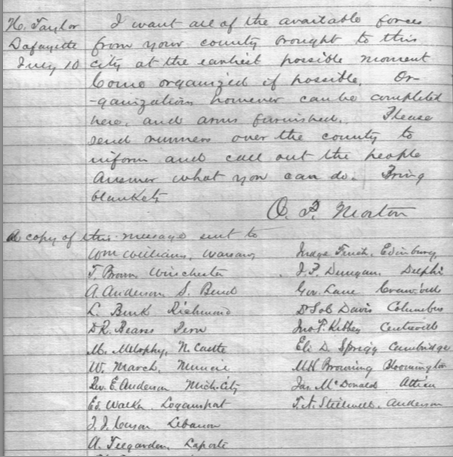It was a unique idea, one that would need special permission from the Secretary of War Stanton himself. Iowa was going to raise a regiment for the Union Army made up of men too old to normally serve in war. Stanton approved the unit with the stipulation that the inductees must all be able-bodied and able to do perform their duties. They could guard prisoners, train depots, or bridges, freeing regular units for battle.

The 37th Iowa Infantry was made entirely of men over 45 years of age, many over 60. The Greybeards, they were called. Their drummer boy was 72- year old Nicholas Ramey. Private Curtis King claimed to be 80. Mainly farmers, most of these men had watched their sons and grandsons go to war and now they wanted their turn.
The 37th was formed in October 1862. They drilled, ate army rations, slept in the cold and wet. Then in January 1863 they were sent to St. Louis, Missouri to guard a prisoner-of-war camp and an arsenal. It was a harsh winter and the elderly men began to suffer. Their initial enthusiasm hit cold reality. By February 200 men had died or taken disability discharges.
Throughout 1863-64 the unit provided guards for military prisons in Indianapolis, Indiana, Alton, Illinois and Rock Island, Illinois. In Tennessee the men of the 37th saw their only combat action. While guarding a provision train they were attacked by guerrillas and returned fire. Two Iowans were killed and two injured.
The regiment was disbanded in May 1864 and the men returned home. Iowa was the only state that raised a unit like the 37th. During its years of active service the Greybeards lost 148 men: 3 were battle deaths and 145 from disease. One of the deaths from disease was John Henry Sims.
John Henry had been born in Indiana but moved with his family to Iowa about 1855. He and his wife Rosanna had 5 sons, but by the days of the Civil War two had died. Their two oldest sons, Wiley and Samuel, enlisted in the 2nd Iowa in May 1861. Son Ellington followed his  brothers in 1862, joining the 33rd Iowa after he turned 18. Later that year their father enlisted. John Henry was 60 years old when he joined the 37th. All three boys would return from the war but not their father. He died of disease in January 1863 in St. Louis where the 37th was on guard duty.
brothers in 1862, joining the 33rd Iowa after he turned 18. Later that year their father enlisted. John Henry was 60 years old when he joined the 37th. All three boys would return from the war but not their father. He died of disease in January 1863 in St. Louis where the 37th was on guard duty.
Connection: John Henry Sims was my husband’s 3rd great uncle. John Henry and Asbury Sims, my husband’s great-great-grandfather were brothers. Also serving in the 37th was my 3rd great uncle, William Taswell Gully.



